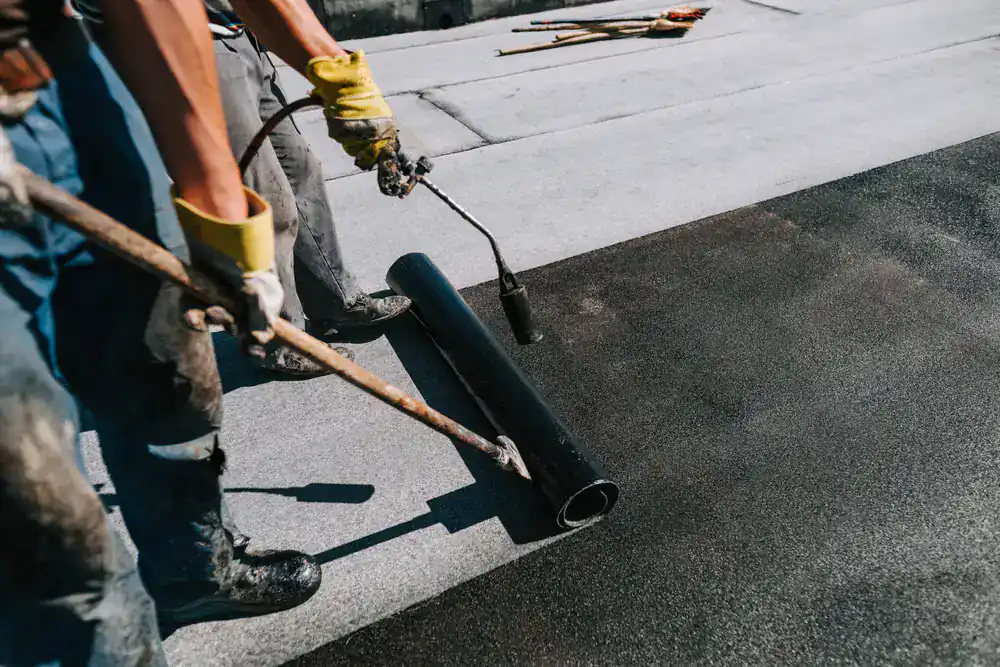
Hear from Our Customers
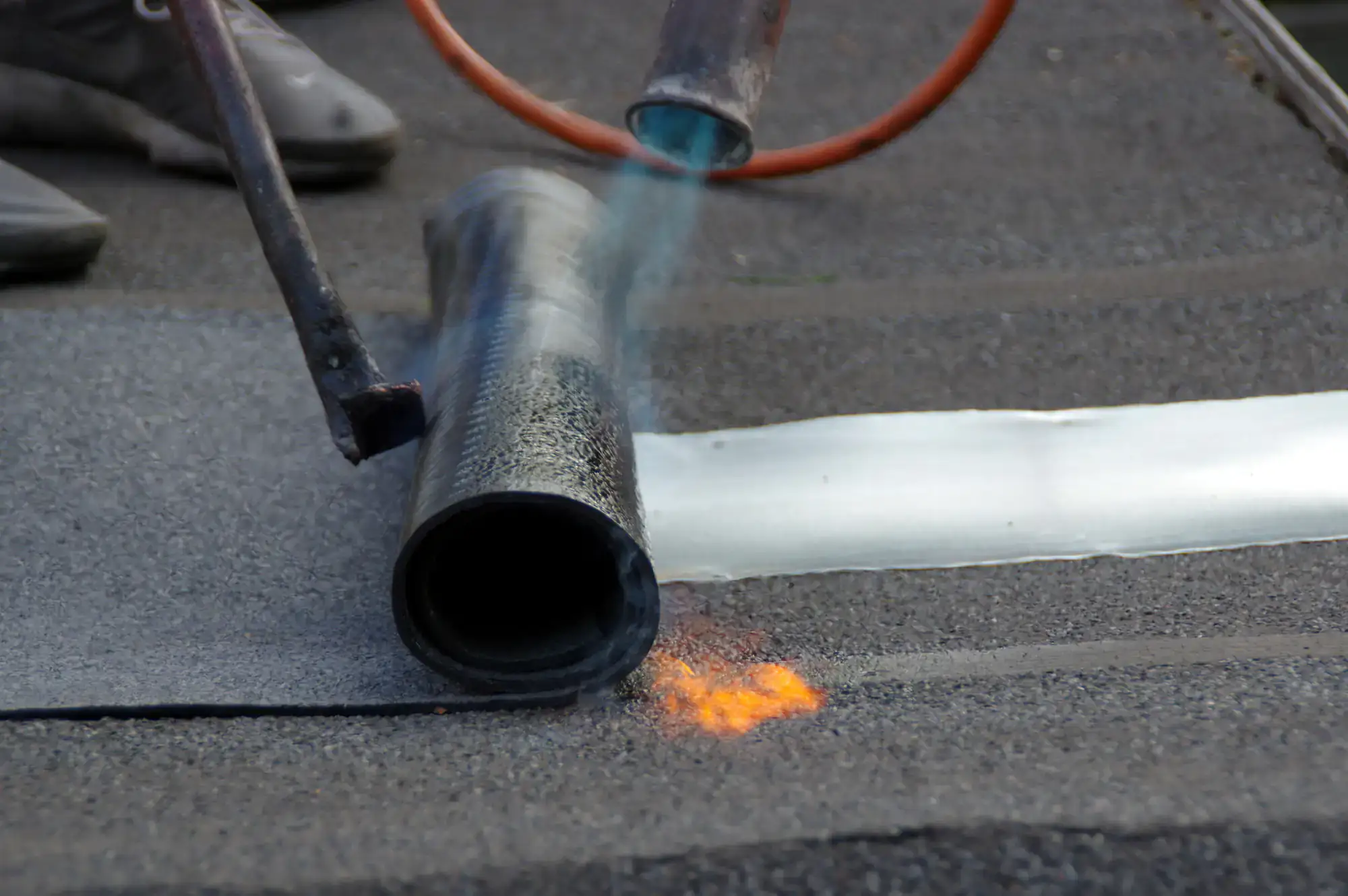
Your flat roof finally works the way it should. No more standing water that destroys your roof and voids warranties. No more emergency calls every time it rains hard.
Torch down roofing creates a seamless, waterproof barrier that actually keeps water out. The modified bitumen membrane bonds directly to your roof surface, eliminating the weak spots where leaks start.
You get 20+ years of protection that handles everything Long Island weather throws at it – from heavy snow loads to summer heat that cracks other roofing materials.
We’ve specialized in flat roofing systems across Long Island for over 20 years. We’ve seen every type of flat roof failure – from standing water disasters to membrane separations that other contractors couldn’t fix properly.
Our team understands Shinnecock Hills’ specific challenges. The salt air, freeze-thaw cycles, and heavy storm systems that hit this area require roofing systems built to handle real conditions, not just look good on paper.
We’re fully licensed, bonded, and insured because flat roofing isn’t something you trust to weekend warriors. When your roof protects your biggest investment, you need contractors who’ve been doing this long enough to get it right the first time.
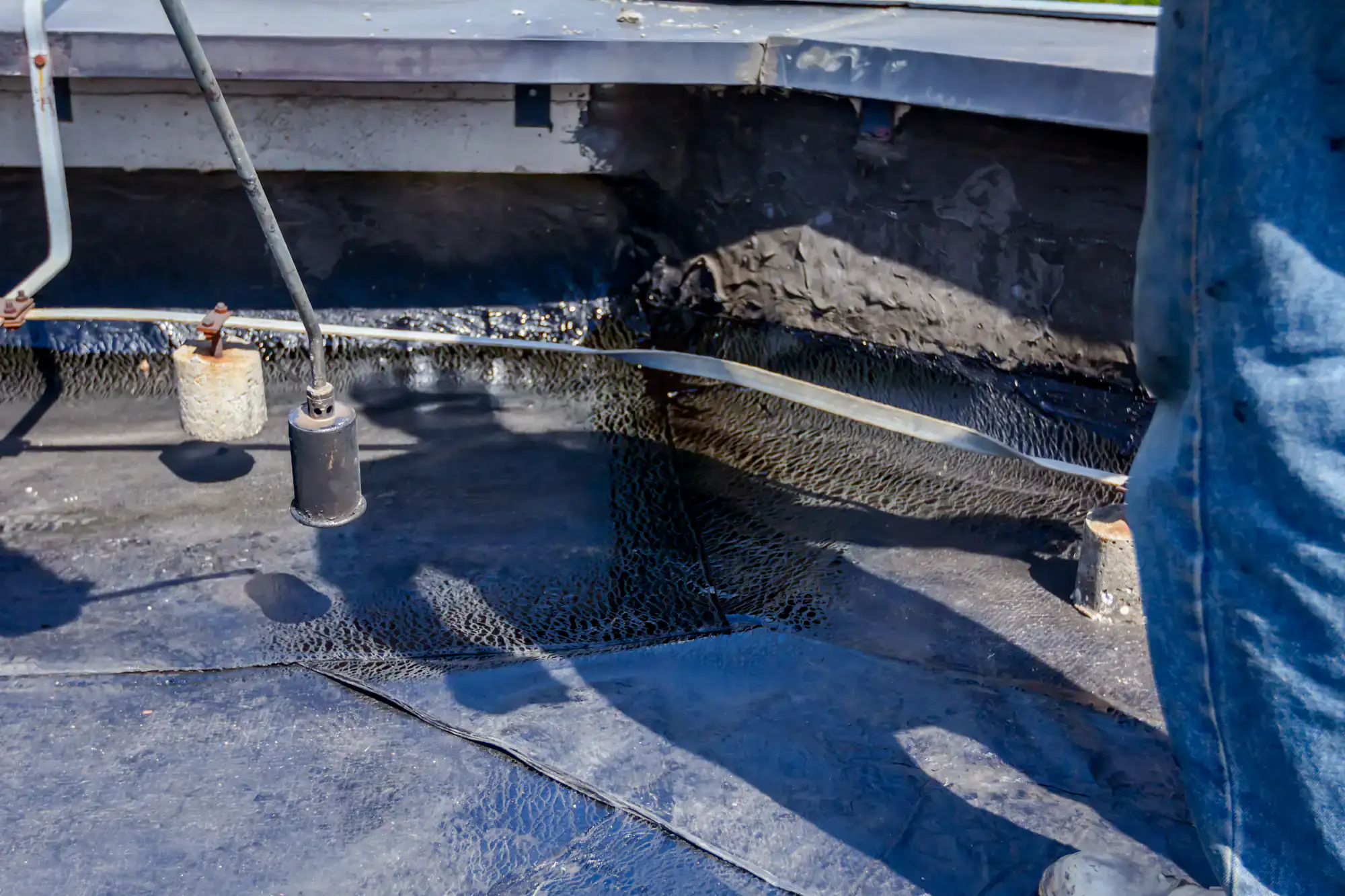
First, we assess your existing roof structure and drainage. Poor drainage kills flat roofs faster than anything else, so we identify problem areas before they become expensive disasters.
Next, we prepare the surface properly. This means removing old materials if needed, checking for structural issues, and ensuring you have the right base for long-term performance.
Then comes the torch down application. We roll out sheets of modified bitumen membrane and use specialized propane torches to heat and bond the material directly to your roof surface. Each seam gets heat-welded to create a completely waterproof seal.
Finally, we install proper flashing around penetrations and edges. Most torch down failures happen at these transition points, so we take extra care to ensure every detail is sealed correctly.
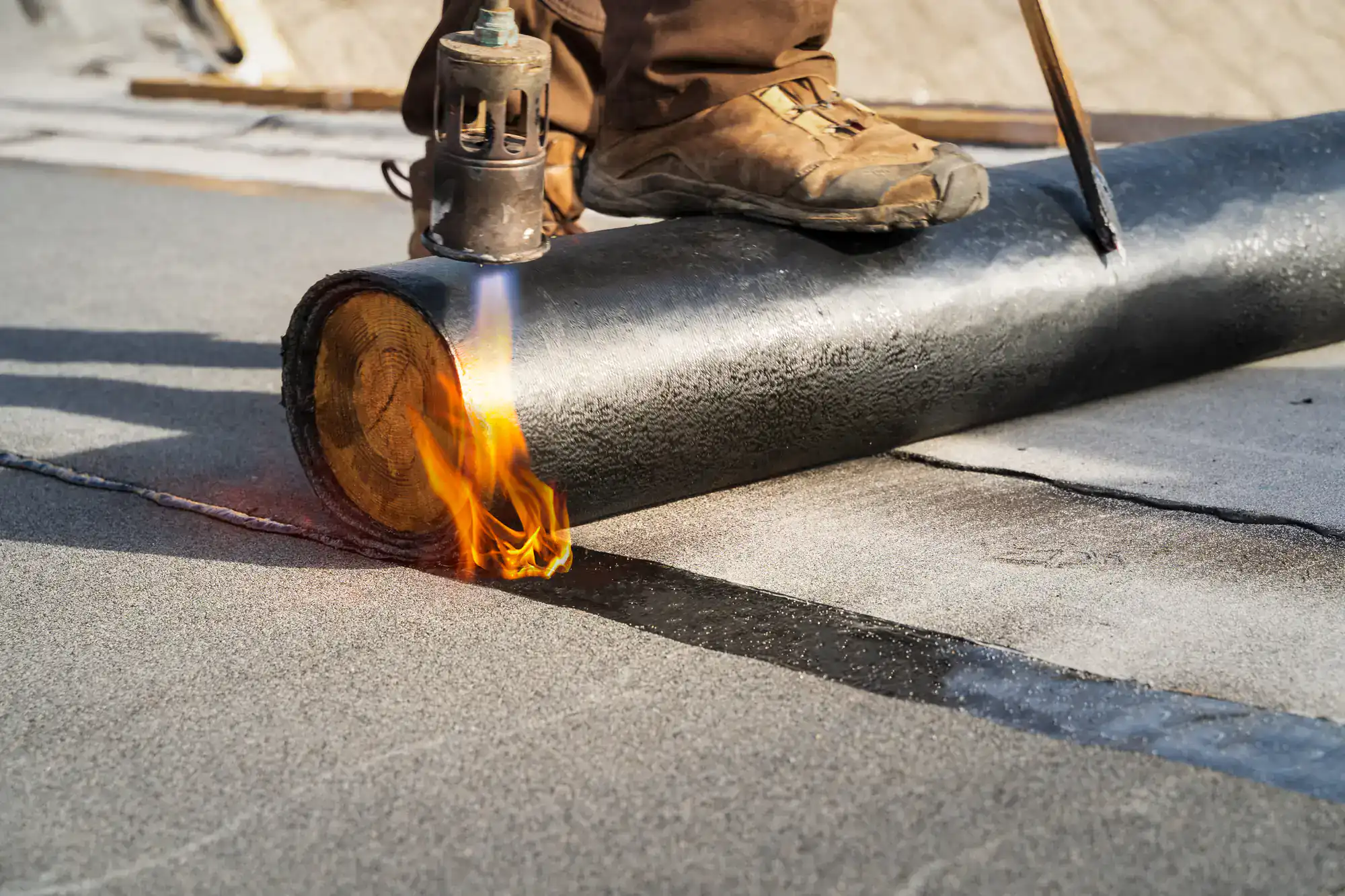
Ready to get started?
Your torch down system includes multiple layers of protection designed specifically for this area’s weather patterns. The APP modified bitumen we use handles temperature extremes better than standard materials.
In Shinnecock Hills, roofs face unique challenges from coastal weather patterns. Salt air accelerates deterioration of many roofing materials, but properly installed torch down systems resist this corrosion for decades.
The system includes UV-resistant granulated surfaces that reflect heat and prevent the thermal cycling that destroys other flat roofing materials. This keeps your building cooler in summer and reduces energy costs year-round.
We also ensure proper insulation integration. Long Island’s energy codes require specific R-values, and we coordinate the torch down installation with insulation placement to meet or exceed these requirements while maintaining the roof’s waterproof integrity.
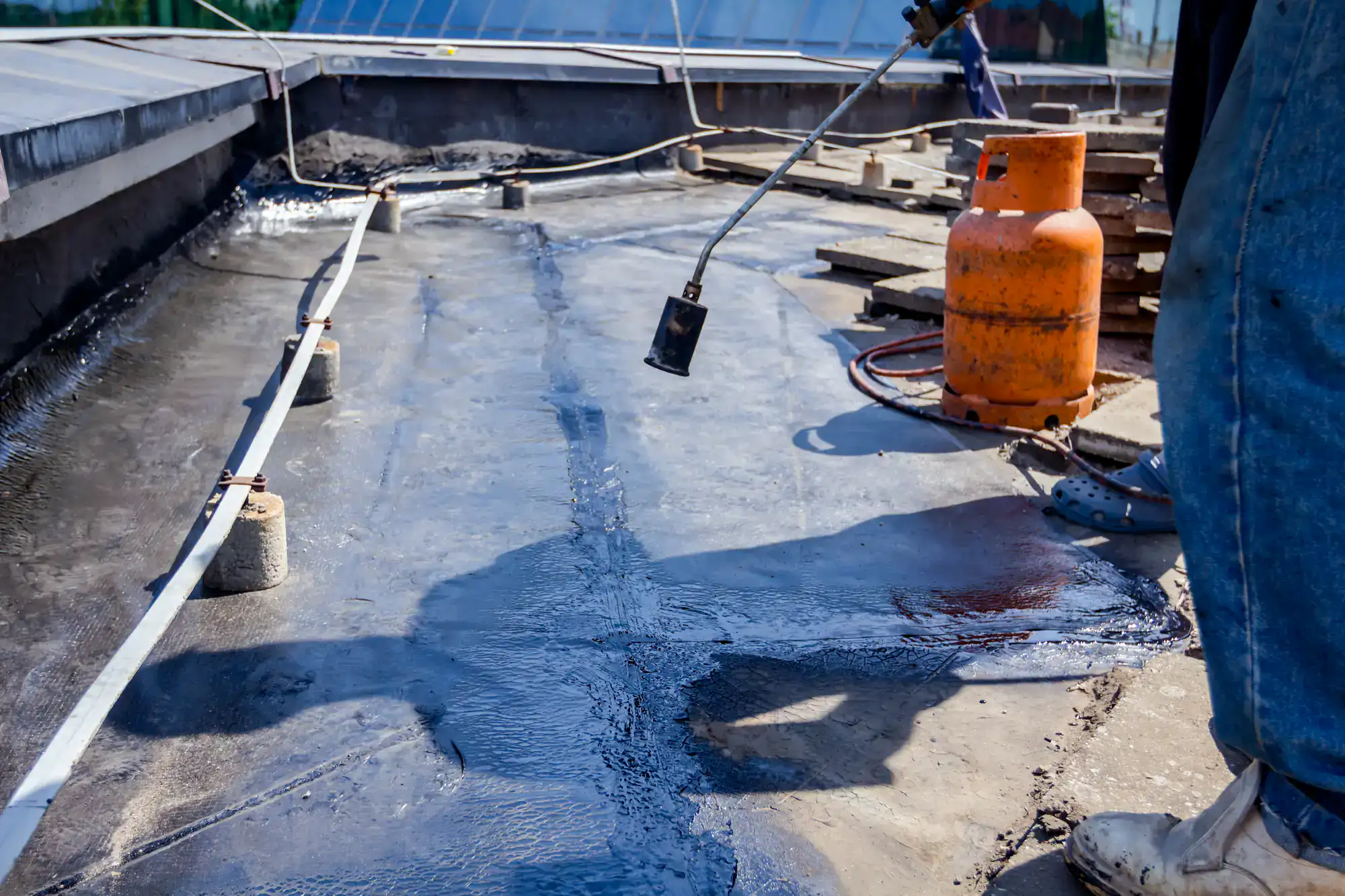
Properly installed torch down roofing typically lasts 20-25 years in Long Island conditions. The key is professional installation and using the right materials for coastal environments.
APP modified bitumen systems handle freeze-thaw cycles and salt air exposure better than most flat roofing options. The heat-welded seams don’t separate like mechanically fastened systems, and the UV-resistant granules prevent the thermal damage that shortens other roof lifespans.
Your actual lifespan depends on maintenance and drainage. Roofs with standing water problems fail early regardless of the material used, which is why proper installation and drainage design matter more than the warranty length.
Torch down roofing uses heat to create permanent bonds between membrane layers, while other systems rely on adhesives or mechanical fasteners that can fail over time.
EPDM rubber roofing uses glued seams that separate when exposed to temperature changes. TPO systems often have problems with seam integrity after a few years. Built-up roofing requires multiple layers and hot tar, making repairs more complicated.
Torch down creates a monolithic membrane – essentially one continuous piece of waterproofing. The propane torch application melts the material together at the molecular level, creating seams that are actually stronger than the base material. This eliminates the weak points where most flat roof leaks start.
Sometimes, but it depends on the condition of your existing roof and local building codes. A proper evaluation determines whether overlay installation is possible or if complete removal is necessary.
If your existing roof has only one layer, is structurally sound, and doesn’t have moisture trapped in the system, overlay installation can save significant costs. However, if there’s any water damage, multiple existing layers, or structural issues, complete removal is the only safe option.
We inspect the existing roof membrane, decking, and drainage system before recommending the best approach. Trying to save money by installing over damaged materials usually costs more in the long run when problems develop later.
Proper drainage design and slope are critical for any flat roof system. We evaluate your roof’s drainage patterns and make necessary corrections during installation.
Standing water that remains for more than 48 hours will damage any roofing material and void most warranties. We install tapered insulation systems when needed to create positive drainage toward roof drains and scuppers.
Sometimes additional drains are required in problem areas. We coordinate with building codes and structural requirements to ensure your roof sheds water effectively. The torch down membrane itself is waterproof, but proper drainage prevents the ponding that leads to premature failure and maintenance problems.
Torch down roofing requires minimal maintenance compared to other flat roofing systems, but regular inspections prevent small problems from becoming expensive repairs.
Annual inspections should check for debris accumulation around drains, examine flashing areas for any separation, and verify that the membrane surface hasn’t been damaged by foot traffic or falling branches. Most maintenance involves keeping drains clear and removing debris.
In coastal areas like Shinnecock Hills, salt buildup can accelerate wear on metal components like drain covers and flashing. Periodic cleaning and inspection of these areas extends system life. The membrane itself typically requires no maintenance beyond keeping it clean and ensuring proper drainage.
Yes, when installed by properly trained professionals with appropriate safety equipment and procedures. The torch application requires specific safety protocols that experienced contractors follow religiously.
We use fire-resistant tarps and have fire extinguishing equipment on-site during all torch applications. Our crews are trained in proper torch techniques and safety procedures specific to occupied buildings.
The actual flame exposure is brief and controlled – just enough to activate the adhesive backing on the membrane. Modern torch down systems are designed for safe installation when proper procedures are followed. We coordinate with building occupants to minimize any concerns and ensure everyone’s safety throughout the installation process.
Other Services we provide in Shinnecock Hills